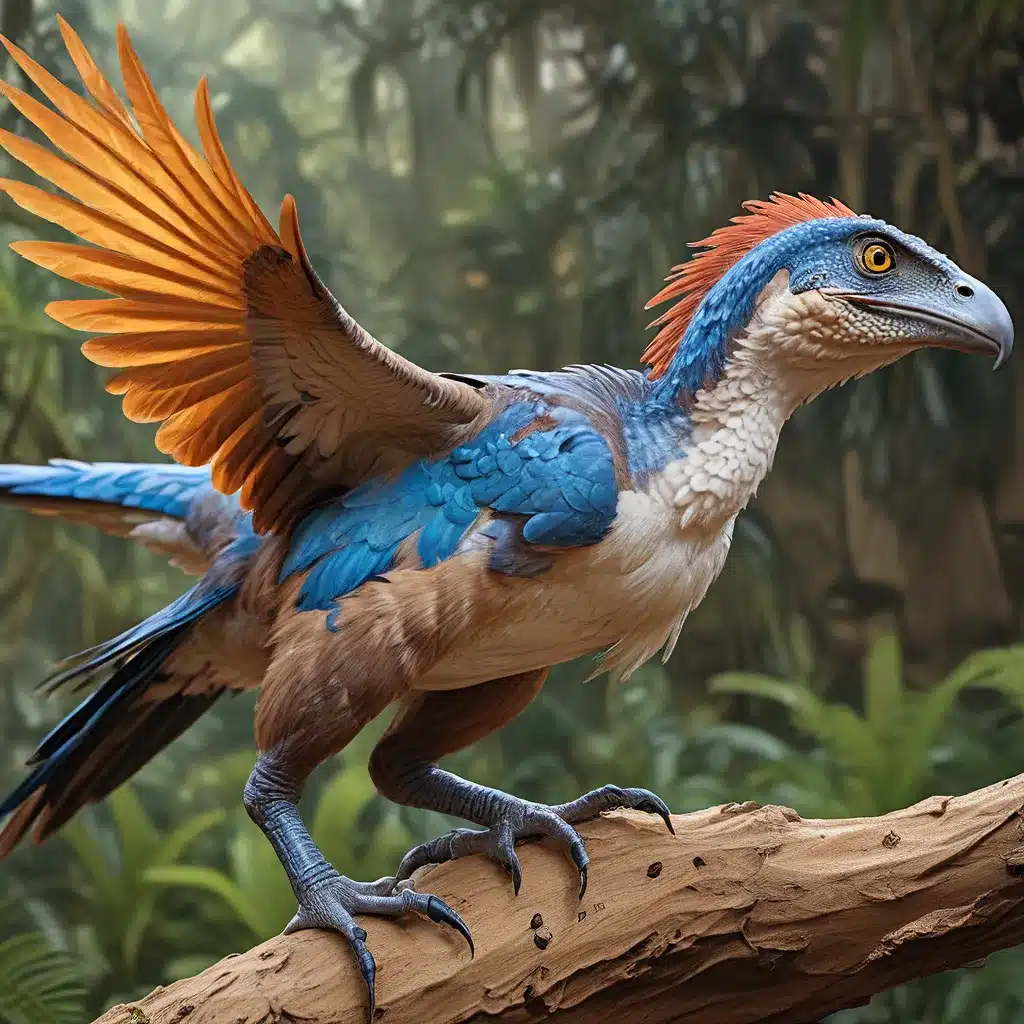
In the vast expanse of the prehistoric world, the enigmatic and feathered Nanotyrannus stands out as a tantalizing puzzle that has captivated the minds of paleontologists and evolutionary biologists alike. This diminutive relative of the mighty Tyrannosaurus Rex has been the subject of intense scrutiny, as scholars delve into the mysteries surrounding its existence and the evolutionary insights it may hold.
Unraveling the Nanotyrannus Enigma
The Nanotyrannus, a name that literally translates to “small tyrant,” has been a source of ongoing debate and speculation within the scientific community. Discovered in the late 20th century, this fascinating creature has challenged traditional perceptions of tyrannosaur evolution, forcing researchers to revisit long-held assumptions.
One of the key points of contention surrounding Nanotyrannus centers on its taxonomic classification. Some scholars have argued that it should be considered a separate species, distinct from the iconic Tyrannosaurus Rex, while others have proposed that it may simply represent a juvenile or subadult form of the larger predator. This taxonomic uncertainty has fueled a passionate scholarly discourse, with each side presenting compelling evidence to support their respective positions.
In an insightful interview with Dr. Robert Bakker, a renowned paleontologist, he sheds light on the ongoing debate surrounding Nanotyrannus. Bakker, known for his groundbreaking work on dinosaur physiology and behavior, suggests that the feathered nature of Nanotyrannus may hold the key to unraveling its evolutionary origins.
Feathers and Evolutionary Enigmas
The presence of feathers on the Nanotyrannus has been a particularly intriguing aspect of its anatomy, as it challenges the conventional understanding of tyrannosaur evolution. Traditionally, tyrannosaurs were believed to be largely devoid of feathery coverings, with their skin being more akin to that of modern reptiles.
Recent paleontological studies, however, have revealed that the evolutionary transition from feathered theropods to the scaly-skinned tyrannosaurids may have been more complex than previously thought. The discovery of Nanotyrannus, with its distinctive feathered appearance, has challenged this linear understanding of tyrannosaur evolution, opening up new avenues of research and speculation.
Bakker’s insights suggest that the presence of feathers on Nanotyrannus may indicate a closer evolutionary relationship to the earlier, more avian-like theropods, such as Archaeopteryx. This intriguing possibility raises questions about the role of feathers in the diversification and adaptation of tyrannosaurs, as well as the broader implications for understanding the evolution of birds and other feathered dinosaurs.
Exploring Ancient Cultures and Artifacts
The study of Nanotyrannus and its evolutionary significance goes beyond the realm of paleontology, extending into the rich tapestry of ancient cultures and their interactions with the prehistoric world. Archaeologists have uncovered numerous artifacts and evidence that shed light on how these enigmatic creatures were perceived and represented by various ancient civilizations.
One particularly fascinating example is the discovery of a 1948 oil sketch by Rudy Zallinger, commissioned for a Life Magazine feature on the “Age of Reptiles.” This artwork, which depicts a Nanotyrannus-like creature, provides a unique glimpse into the evolving understanding and artistic interpretations of these prehistoric beasts in the mid-20th century.
Such cultural artifacts and historical representations not only offer valuable insights into the public’s fascination with dinosaurs but also highlight the ongoing dialogue between scientific discoveries and their broader societal impact. As our understanding of Nanotyrannus continues to evolve, these ancient artifacts and cultural representations serve as an important reminder of the deep-rooted human connection to the mysterious and captivating world of the prehistoric.
Emerging Theories and Technological Advancements
The study of Nanotyrannus and its evolutionary significance has been further bolstered by the rapid advancements in paleontological research and technological tools. From cutting-edge imaging techniques to sophisticated analytical methods, scholars are now able to uncover new insights and challenge long-held assumptions about this enigmatic creature.
One such emerging theory suggests that the feathered Nanotyrannus may have been a highly specialized predator, adapted to hunting in densely forested environments. This hypothesis, which aligns with the website’s focus on the fascinating interplay between ancient civilizations and their natural environments, could shed light on the evolutionary adaptations and behavioral strategies of this diminutive tyrannosaur.
Moreover, the application of advanced imaging technologies, such as CT scans and 3D modeling, has allowed researchers to delve deeper into the anatomy and physiology of Nanotyrannus, uncovering new clues about its growth patterns, dietary preferences, and even potential feathered adaptations. These technological advancements have not only fueled the ongoing scholarly debate but have also captured the public’s imagination, sparking renewed interest in the enigmatic world of feathered tyrannosaurs.
Conclusion: Embracing the Evolutionary Mysteries
The Nanotyrannus remains an evolutionary enigma that continues to captivate the minds of paleontologists, evolutionary biologists, and history enthusiasts alike. As the scientific community delves deeper into the mysteries surrounding this diminutive tyrannosaur, we are presented with a unique opportunity to challenge our preconceptions, embrace the complexities of evolutionary processes, and unravel the intricate tapestry of prehistoric life.
Through the lens of Nanotyrannus, we witness the dynamic interplay between scientific discovery, cultural representation, and our own evolving understanding of the ancient world. By embracing the evolutionary enigmas that this remarkable creature presents, we open the door to broader insights into the rich tapestry of life that has shaped our planet over millennia.
As we continue to explore the Nanotyrannus and its place within the grand narrative of dinosaur evolution, we are reminded of the enduring power of scientific inquiry and the transformative potential of new discoveries. The evolutionary enigmas of the feathered Nanotyrannus scholars promise to captivate and inspire us for generations to come, driving us ever deeper into the mysteries of the prehistoric world.


